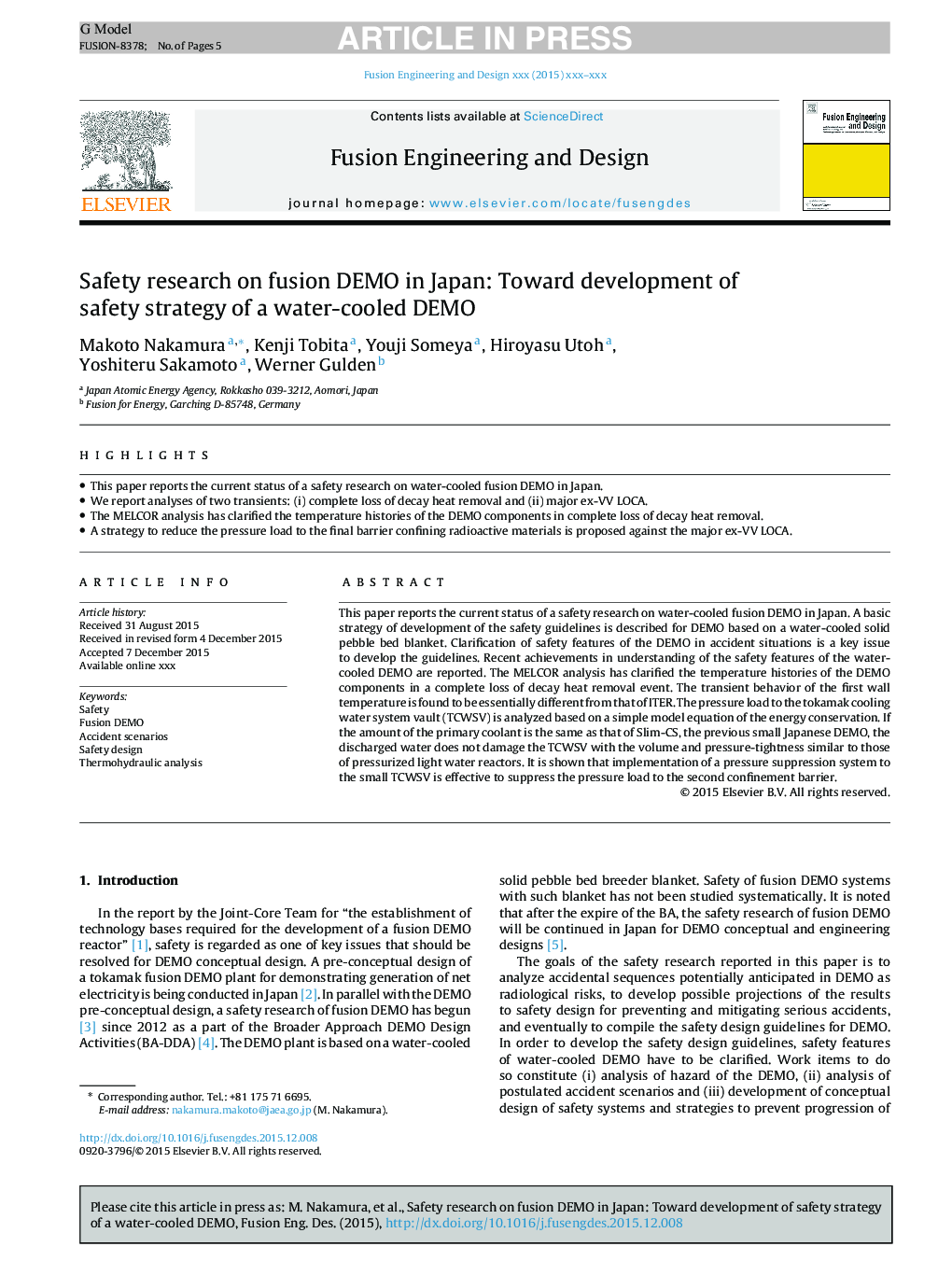| Article ID | Journal | Published Year | Pages | File Type |
|---|---|---|---|---|
| 4921359 | Fusion Engineering and Design | 2016 | 5 Pages |
Abstract
This paper reports the current status of a safety research on water-cooled fusion DEMO in Japan. A basic strategy of development of the safety guidelines is described for DEMO based on a water-cooled solid pebble bed blanket. Clarification of safety features of the DEMO in accident situations is a key issue to develop the guidelines. Recent achievements in understanding of the safety features of the water-cooled DEMO are reported. The MELCOR analysis has clarified the temperature histories of the DEMO components in a complete loss of decay heat removal event. The transient behavior of the first wall temperature is found to be essentially different from that of ITER. The pressure load to the tokamak cooling water system vault (TCWSV) is analyzed based on a simple model equation of the energy conservation. If the amount of the primary coolant is the same as that of Slim-CS, the previous small Japanese DEMO, the discharged water does not damage the TCWSV with the volume and pressure-tightness similar to those of pressurized light water reactors. It is shown that implementation of a pressure suppression system to the small TCWSV is effective to suppress the pressure load to the second confinement barrier.
Related Topics
Physical Sciences and Engineering
Energy
Energy Engineering and Power Technology
Authors
Makoto Nakamura, Kenji Tobita, Youji Someya, Hiroyasu Utoh, Yoshiteru Sakamoto, Werner Gulden,
